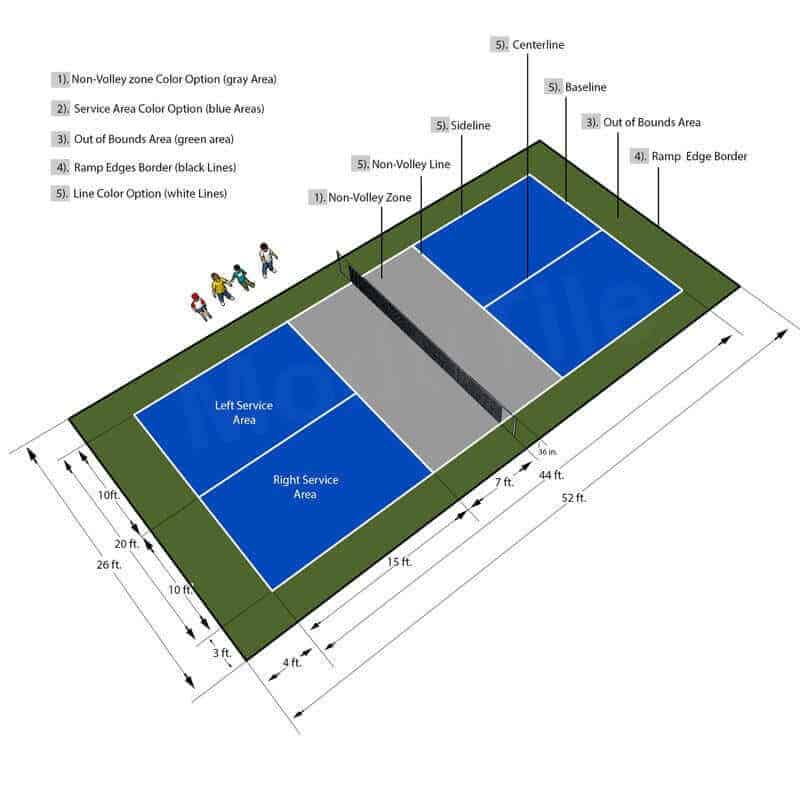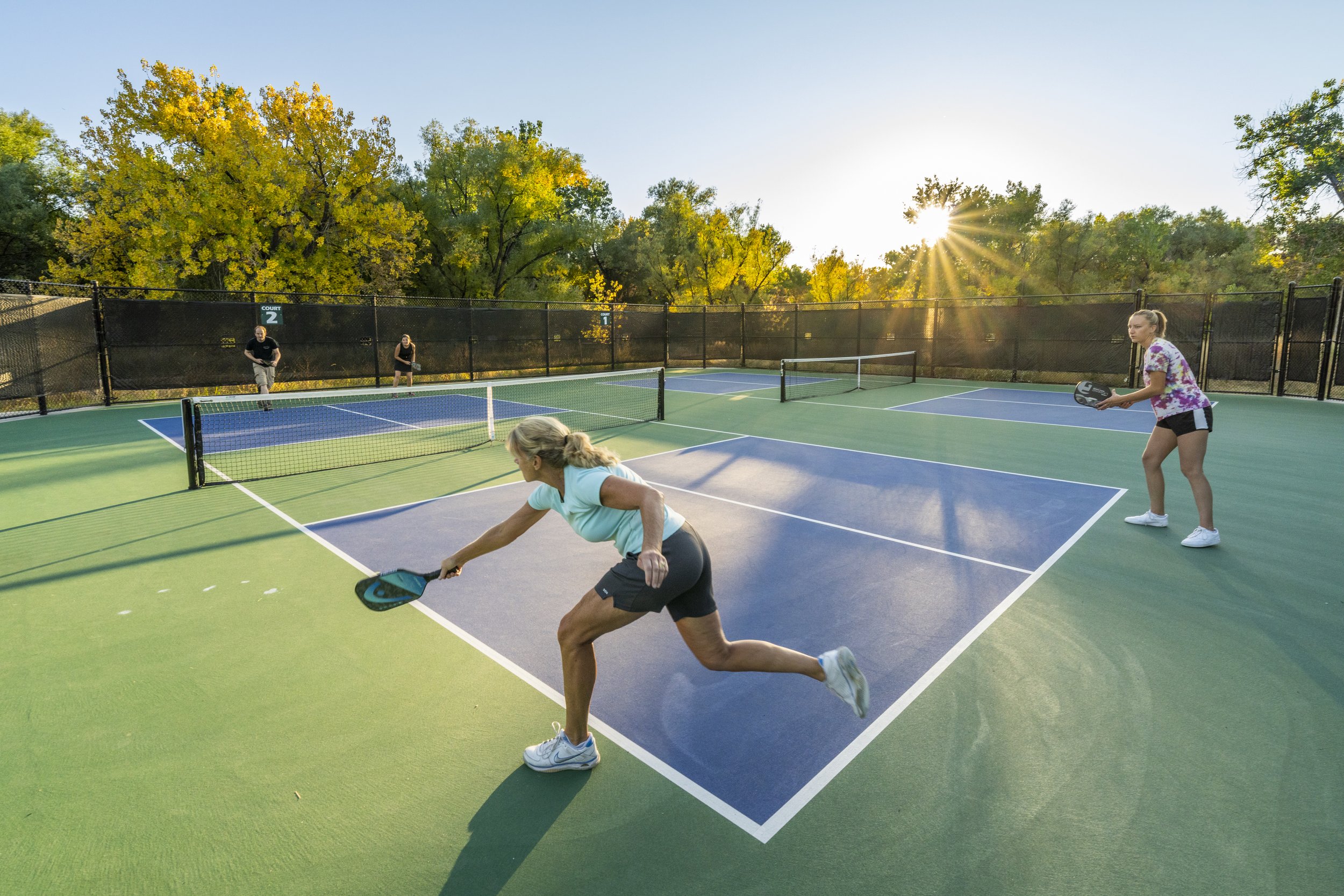Navigating Regulations for Pickleball Court Building And Construction in Your Area
Creating a pickleball court in your area needs a nuanced understanding of various local regulations, including zoning laws, building authorizations, and safety and security requirements. Each municipality enforces particular guidelines that can substantially affect the feasibility of your project. Engaging with local authorities and the neighborhood is essential for making sure conformity and promoting assistance. Nevertheless, browsing this regulative landscape can be time-consuming and complicated. What are the key actions you should consider to prevent prospective risks and ensure a smooth building and construction process?
Comprehending Local Zoning Regulations
When taking into consideration the construction of a pickleball court, recognizing neighborhood zoning laws is critical to making certain compliance and preventing potential lawful issues. Zoning laws determine how land can be made use of and frequently consist of specs relevant to leisure centers. These laws can differ significantly by district, affecting variables such as court placement, dimension, noise, and lights levels.
Prior to launching building and construction, it is necessary to consult the neighborhood zoning board or planning division to identify the particular laws that apply to your residential property. Particular zones may restrict recreational tasks, while others may call for specific authorizations or adherence to certain standards. It is likewise essential to take into consideration setbacks, which identify exactly how much structures should be from residential or commercial property lines or various other structures.
In addition, exclusive growths, such as property owner associations (HOAs), might enforce their own rules relating to the construction and use pickleball courts. Understanding these laws can stop expensive modifications or litigation down the line. Involving with local stakeholders and area participants can give useful insights and foster support for your job, ensuring that it aligns with the community's assumptions and demands.
Obtaining Necessary Building Permits
How does one browse the intricacies of obtaining required structure permits for a pickleball court? The procedure starts with recognizing regional regulations and requirements set forth by metropolitan authorities. Commonly, you will certainly need to submit an in-depth website plan that describes the suggested court dimensions, products, and layout. This plan ought to follow zoning regulations and any type of specific regulations referring to recreational facilities.

As soon as licenses are obtained, it is crucial to comply with any evaluation routines and needs throughout the building stage. Preserving communication with local authorities will certainly facilitate a smoother authorization process and assistance avoid possible setbacks. By completely preparing and understanding the permitting landscape, you can efficiently browse the complexities associated with building a pickleball court while remaining certified with all regional guidelines.

Assessing Environmental Impact
A thorough analysis of environmental effect is necessary when preparing the construction of a pickleball court. This analysis helps determine prospective impacts on local ecosystems, water sources, and area looks. Trick aspects to take into consideration consist of site selection-- making certain that the court is not built his response on environmentally sensitive land, such as marshes or environments for jeopardized types
Dirt stability and drain patterns need to be analyzed to stop erosion and water merging, which might adversely affect bordering greenery and wild animals. In addition, the choice of products is crucial; selecting eco-friendly and lasting alternatives minimizes environmental damage.
The execution of effective stormwater monitoring practices is one more vital facet, as it helps mitigate drainage and sedimentation. Engaging with regional environmental firms can provide valuable insights into guidelines and finest practices specific to your area.
Finally, neighborhood input can be helpful in comprehending any kind of neighborhood ecological problems and cultivating support for the job. By performing a thorough ecological effect evaluation, stakeholders can make certain that pickleball court building and construction straightens with sustainable techniques and adds favorably to the neighborhood's eco-friendly health and wellness.
Conforming With Safety Specifications
Guaranteeing compliance with security criteria is vital for the effective building and construction and procedure of a pickleball court. Complying with recognized security laws minimizes the risk of accidents and injuries, making certain a safe setting for players.
Trick safety standards consist of correct court dimensions, surface products, and illumination needs. The court needs to meet the main measurements of 20 feet wide by 44 feet long for doubles play, with ideal barrier zones to avoid injuries from wayward balls. Pickleball court construction. The surface needs to be constructed from non-slip products to enhance traction and decrease the possibility of drops
Furthermore, lights needs to suffice for night play, providing uniform lighting to stay clear of shadows that can hinder visibility. Regional building ordinance may additionally determine certain requirements for fence and web height to ensure gamer security and stop unauthorized access to the court area.
Routine examinations and maintenance are important to copyright these standards gradually. By prioritizing safety compliance, court owners not just shield gamers yet additionally cultivate a favorable online reputation within the area. This dedication to safety can motivate higher participation and satisfaction of the sporting activity, inevitably adding to its growth and sustainability.

Involving the Community in Preparation
Area participation in the planning phases of pickleball court building and construction can substantially improve the job's general success. Engaging regional homeowners and stakeholders fosters a feeling of ownership and urges collaborative decision-making, which can result in broader assistance for the campaign.
To efficiently include the neighborhood, coordinators need to launch public meetings or workshops, providing a platform for residents to voice their opinions and preferences concerning location, design, and features. Surveys and comments types can likewise be utilized to gather insights from a larger audience, making certain that varied point of views are thought about.
Moreover, creating a neighborhood advising board can assist in recurring discussions and address concerns throughout the preparation procedure. This board can consist of reps from numerous demographics, such as neighborhood colleges, recreational organizations, and neighborhood watch, therefore magnifying area depiction.
Efficient communication is key; updates about the task must be frequently shared via newsletters, social networks, or regional notices. By focusing on community engagement, organizers can grow interest, minimize possible opposition, and create a pickleball center that absolutely resonates with regional worths and needs. This collaborative read the article technique not only enhances the project however also enhances area ties.
Verdict
Finally, navigating the intricacies of pickleball court building requires a thorough understanding of neighborhood laws, including zoning read review legislations, structure permits, and safety and security standards. Carrying out environmental assessments is necessary to reduce environmental influence, while area involvement can enhance support for such projects. By adhering to these standards and cultivating cooperation, successful execution of pickleball courts can be attained, advertising entertainment opportunities and area well-being. Continued diligence in these areas will certainly make certain lasting and compliant growth.
Constructing a pickleball court in your location calls for a nuanced understanding of various neighborhood guidelines, consisting of zoning laws, building licenses, and security standards.When taking into consideration the building and construction of a pickleball court, understanding local zoning regulations is vital to making certain compliance and preventing prospective legal problems. By completely preparing and understanding the permitting landscape, you can efficiently navigate the intricacies included in constructing a pickleball court while staying certified with all neighborhood policies.
In conclusion, navigating the complexities of pickleball court building and construction necessitates a detailed understanding of neighborhood guidelines, including zoning legislations, building authorizations, and safety and security requirements. By sticking to these standards and fostering partnership, effective execution of pickleball courts can be achieved, promoting entertainment chances and area well-being.